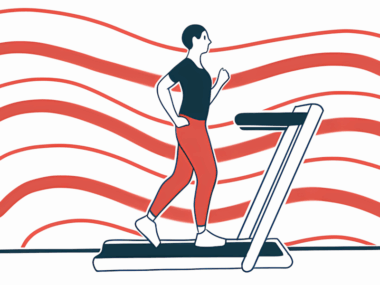Noninvasive brain stimulation could boost MS physical therapy benefits
Combined treatment offers longer-lasting gain to walking speed, balance
Written by |

Adding noninvasive brain stimulation to physical therapy may help people with multiple sclerosis (MS) improve their balance and walking ability, a study shows.
Benefits to physical therapy with and without brain stimulation were observed, but most only remained significant after six months in those who’d also received brain stimulation.
“Our results suggest that the addition of [brain stimulation] prior to exercise treatment provides a significant improvement in walking speed and balance in people with MS which lasts longer, compared to exercise alone,” the researchers wrote.
Their study, “Noninvasive brain stimulation enhances the effect of physiotherapy for balance and mobility impairment in people with Multiple Sclerosis,” was published in Multiple Sclerosis and Related Disorders.
Problems with balance and walking are common symptoms of MS. Physical therapy, or physiotherapy, which involves exercising under the guidance of a physical therapist, can help people with MS manage these symptoms.
Physical therapy isn’t perfect, however and there’s a constant need for ways to increase its effectiveness. One possible strategy is transcranial direct current stimulation (tDCS), which involves applying an electrical current to the outside of the head to target the part of the brain that mainly controls movement, called the motor cortex, the idea being to make it more active and adaptable so it can better take in physical therapy’s benefits.
Benefits of brain stimulation
A research team in Australia enrolled 40 adults with MS in a small clinical trial (ACTRN12628001836224) to take part in a six-week physical therapy program designed to improve gait and balance. Before each session, half the patients received 20 minutes of tDCS targeting the area of the motor cortex involved in limb movements, while the others received sham stimulation.
The 36 patients who completed the study were assessed a week after the intervention and most of them underwent a follow-up assessment six months later.
“The aim was to see if combining transcranial direct current stimulation (tDCS) with conventional exercise therapy enhances balance and mobility in people with MS, compared to exercise alone,” Soumya Ghosh, PhD, co-author of the study at the Perron Institute, said in a university news story.
Patients in both groups saw significant improvements in standard measures of walking ability and balance, showcasing the impact of physical therapy for improving mobility in MS. But those given tDCS were generally more likely to have improvements last after six months than those who’d received the sham procedure. These patients also saw significant gains in physical and mental quality of life after six months.
“Our results suggest that the addition of tDCS before exercise provides a significant improvement in walking speed and balance in people with MS, which lasts longer compared to exercise alone,” Ghosh said. “Further study is needed to optimize the use of this relatively inexpensive and well tolerated device for rehabilitation.”






